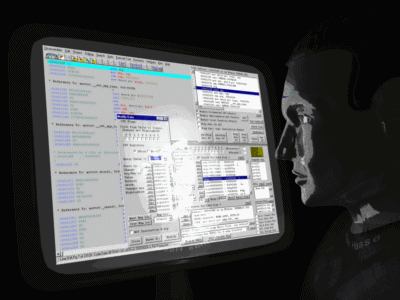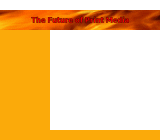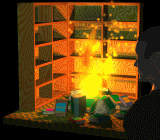Thomas
Haase
Computer-generated
Audio-visual Media
Front
Page
Digital
Processing Contact Impressum ![]()
"Philosophy"
Bad
Developments
The
top priority of digital media development must always be functionality.
It is always more important to make a product work under different
conditions than to integrate non-essential features that will limit the
product's range of compatibility or usability.
The only acceptable
exception are cases where the product is to run exclusively on certain machines/devices
that are individually known in detail.
It
is always a symptom of incompetence if someone integrates a
design feature into an application software causing it to require
certain versions of the operating system or even some new piece
of hardware.
In practice, it is often the case that even the
development environment used is producing software that is limited
to be used exclusively on certain versions of an operating
system family. It gets even worse if you realize that a fully equal
product could have been produced without such a limitation if the
right development software had been chosen before, which is typically
available in any case.
A result is the appearance of awkward
product notes such as "runs on operating system versions E and F", actually
meaning "does not
run on operating system versions
A, B, C, and D", or "optimized for X Technology",
typically meaning "completely useless without obtaining a new
machine with X Technology".
One also has to take into account that a development machine typically has all hardware and software components installed that are required to make the product work, and that these components may be missing on customer machines. And the note "click here to download component X" will only increase the extent of embarrassment - aside from the fact that trying to saddle the customer with saved development efforts is actually an impertinence.
A
special subject are the computer operating systems. The purpose
of an operating system is to enable a machine to run application
software.
A new version of an operating system must first guarantee
the usability of the pool of former suitable software. It must be
capable of running on both older and new hardware. Any limitation
of these basic functions can only be accepted when targeting exclusively
at special systems. Otherwise, you are dealing with
trash.
And any awkward attempts to obscure the operating system's garbled
usability with additional features - rottenly copied from real application
software - make things even worse. If one finally adds
some completely superfluous childish (but machine-loading) visual
effects, you will easily get an overpriced fourth-class computer
game, being worlds apart from an operating system...
Unfortunately, in today's real world, the digital market with its continuous bad technological developments and design trends - being occasionally quite lucrative for the developler - is increasingly becoming a pain for the customer. (In the hardware branch, it is already even the case that the customer has to do one of the most expensive production processes belated and unpaid - the final testing of the product.)
In order to escape this trend, the developer's side requires only a few thoughts more and a few coins less - and that's quite feasible...
Thomas Haase
Depicting the real world is not digital art
The electronic
revolution has significantly increased the potentialities of artistic
designing.
Creative individuals who are able to understand this
new world are already extensively using its almost unlimited potentials
of developing and designing.
An outsider
may think the most striking difference between classic print media
and the new digital media is that the latter ones can be animated
and interactive.
In fact, the main difference is the following: The basic
elements of classic print media (as well as of films and audio recordings)
are depictions of the real world, in most cases photographs of real
persons, objects, buildings, or landscapes. The classic cartoon films are also
depictions of real drawings, and even many of the modern "computer-generated" films
are basing on digitally scanned plaster models.
However, the basic elements of the new digital media are typically depictions of a purely virtual world as it was unthinkable at times before the electronic revolution.
A today's web designer does not walk around with a camera. Instead, he is sitting in front of his computer, focused on calculating the properties of a virtual world that only exists in his brain and in his machine which will then compute the desired depictions of that virtual world. Video and audio are no longer captured, but created out of nothing by means of mental imagination and technological knowledge.
Therefore,
extensive high-level skills are a must for any digitally creative
individual. In order to create something "new", it is
no longer sufficient to simply assemble depictions of the real world.
Today,
one has to develop everything from scratch. But this requires an
essentially higher level of creativity, much greater powers of imagination
as well as extensive knowledge of mathematics, physics, programming,
and further disciplines such as music composition.
If one does not meet these requirements, his digital products will actually be something like animated, interactive print media, in the worst case e.g. a web site assembled from tuned photographs and texts.
Thomas
Haase
© Copyright 2008-2015 by Thomas Haase. All rights reserved.

